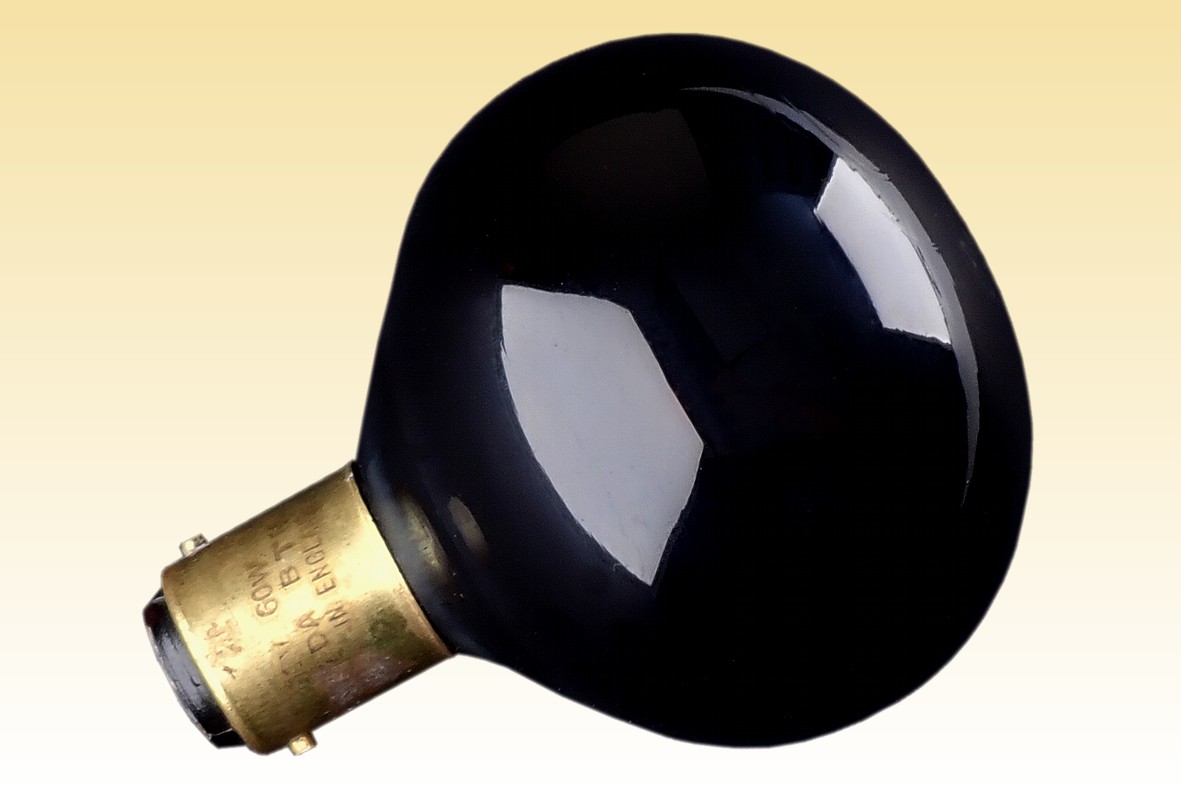
|
BTH-Mazda Incandescent Blacklight Military |

Wood's glass was developed to allow secret communications by pulsed light signalling, with a UV receiver being used during the daytime, and an IR detector provided easier reception at night. Later it was applied for the production of UV-A transmitting lamps for fluorescence effects, which became especially popular during World War II. Blacklight lamps were developed primarily for aircraft cockpits and ship's bridges having control panels printed with fluorescent inks, which allowed ambient light levels to be reduced so as to preserve night vision. Experiments were also made with automotive headlights and fluorescent roadsigns for driving during air raid conditions, but never widely adopted.
This lamp is believed to be an experimental British model from the early part of WW2. Being based on a tungsten filament the UV output is extremely low, and by the early 1940s blacklight applications had already migrated to more powerful discharge lamps. It is marked with the crow's foot broad arrow indicating property of the UK War Office, but is not numbered or listed in the UK Defence Standards for electric lamps. Lamps for aircraft use would normally be rated 28V, but many British wartime aircraft operated on 12V systems, so it is not known if this lamp was intended for aircraft, marine or road use - or for signalling applications.




| Manufacturer: | The British Thomson-Houston Co. Ltd. | |
| Lamp Power: | 60 Watts | |
| Lamp Voltage: | 12 Volts | |
| Lamp Current: | 5 Amperes | |
| Cap Type: | B15d/17 | Brass & Vitrite |
| Bulb Type: | P-50 | P-16 in eighths/inch |
| Bulb Finish: | Blacklight | Wood's Glass |
| Filament Type: | C-2V | Single Coil Vee |
| Atmosphere: | Argon-Nitrogen | Red P getter |
| Luminous Flux: | ~2 lumens | |
| Luminous Efficacy: | ~0.03 Lumens per Watt | |
| UV-A Flux: | ~0.2 Wrad | 320-400nm |
| UV-A Irradiance: | ~8 mW/m² | @ 1 metre |
| Wavelength: | Peak: 385nm | Dominant: 420nm |
| Chromaticity Co-ordinates: | CCx: 0.200 | CCy: 0.185 |
| Lifetime: | 100h @ 13.5V? | |
| Burning Position: | Universal | |
| Overall Length: | 63 mm | 21/2 inches |
| Light Centre Length: | 28.5 mm | 11/8 inches |
| Factory: | Rugby | England |
| Date of Manufacture: | 1943 September | Date Code: 21 |
| Original Value: | Unknown | |

